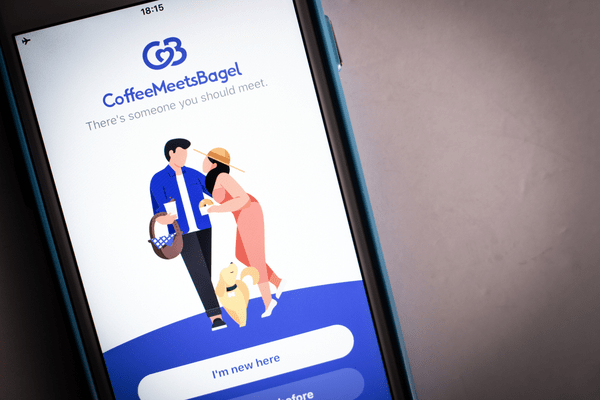The 6 Key Factors in Selecting a Dating Platform

Online dating doesn’t have to be complicated. If you find the right dating platform, you could start having fun from the moment you hit “sign up”.
Everybody’s looking for a result that’s unique to them; if you know what you want, there’s probably a dating platform out there that can get you the right match. Simply signing up for the first big-name site that comes to mind might work eventually, but you could do so much better! Try not to settle on a firm choice until you’ve explored your options – this applies to both dating sites and the actual dates.
You’ll want to make sure the site you choose has the right features to make your experience both seamless and enjoyable. If you’re interested in finding out what those features are, just keep reading.
1. Does the dating platform allow you to search for matches yourself?
Some people like exploring their options. If that’s the case, a dating app like Tinder could be just the ticket. Tinder (and comparable apps or sites) uses a complex algorithm to generate matches. The algorithm looks at not only the information you’ve provided in your profile but the way you’ve responded to past recommendations. It’s a buffet-style approach to finding a date, and for some people that’s perfect.

Other people already have a specific kind of person in mind, and would prefer to avoid taking the scenic route to a match. In that scenario, a search tool is a must. A bare-bones search function will let you find matches based on their distance from you, their age, and their gender. A more sophisticated search tool will include fields for height, income, ethnicity, occupation, eye color, religion, and more. On OkCupid, users can even perform keyword searches for someone’s favorite band or hobby.
Others prefer random dating and meeting new people. Free adult chat sites like Flingster allow the user to roll the dice without much investment. This is great for the person
2. How does the messaging feature work – is there a limit?
The perfect pairing might begin with the right profile, but it gets off the ground with communication. Some dating platforms or apps permit unlimited messaging, like OkCupid; others only allow chats between people who have liked each other’s profiles, like Tinder. Then there are sites like Match.com, which require a paid subscription before users can message each other.
As a general rule of thumb, the more exclusive the chat feature is, the fewer casual messages you’ll get. Nobody’s going to pay for a subscription so they can start spamming “what’s up” messages to anybody that looks vaguely interesting.
All in all, the approach that platforms like Tinder use seem to be a healthy middle ground, especially for free accounts. A lot of the messages won’t necessarily be from people who are seriously interested, but at least you’ll both have to confirm that the other person could work before the talking starts.
3. Are there filters so you can avoid the deal breakers?
Efficiency might not be a huge priority when you first sign up on a dating site, but it could quickly move up the list if you have to rule out one potential match after another because of really basic stuff. For instance, some users just aren’t interested in people who drink a lot, or use too much “text speak” or profanity in their messages. Filters do the legwork to rule out these users, so you don’t have to.
Certain dating sites offer plenty of other ways to filter out undesirable matches. For instance, you could limit who views your profile or photos, or set filters on your inbox. Or, you could customize your settings so that you would only see matches or messages from profiles that were up to standard.

4. What (if any) are the premium features?
Everybody likes free stuff – but occasionally dating sites will offer paid premium features that a lot of people feel are worth the money. Say for instance that the free version of the site lets you view peoples’ profiles, match with the users you like, and send messages. Some paid extras might include being able to see who liked your profile or getting a “message read” notification.
Sites that offer both free and paid versions will work satisfactorily either way; however, the extras can really help you feel in control of how your online dating experience is going.
5. What level of customer service can you expect?
The majority of dating sites and apps are set up to be self-explanatory, but that isn’t always enough. Sometimes people just need some extra help; if they have questions or need some assurance, getting a response should be quick and easy. In the rare case that there’s a problem with the account – like if it got wrongly flagged, for instance – the dating site would ideally find out what happened and resolve the issue.
6. How many active users does the platform have?
A little math never hurt anybody, and it might even increase your chances of getting a match. Here’s the equation: more active users = more potential matches.
This is a big advantage of the really popular dating sites and apps. If you want to find a date you won’t have to travel for, platforms like Match.com or Tinder should give most people tons of options.
At the other end of the spectrum, you could hone in on one of your passions or key characteristics with a niche dating site. You might not find as many people in your part of the country, but it’ll be much easier to match due to the common ground you already have. Most of these sites are centered around a shared interest, like sci-fi or rock music, or maybe a political stance. It’s not for everyone, but for some people, it’s all they need.
If a dating platform isn’t doing the job, find another one.
Even if you’re just looking for something casual, it shouldn’t take a lot of effort to find the match you were hoping for. The right dating platform will make you feel like you’re in control of the whole process – now go get started!
Read Also:
10 Reasons to Go for a Walk With Coffee on a First Date
Sign up for FD's newsletter
The freshest stories from the food and dating world every week.




